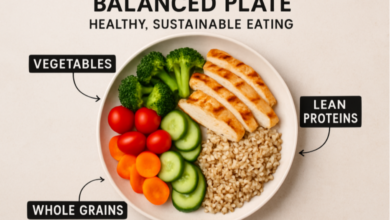Smart Strategies for Choosing Individual Health Insurance Plans

Key Takeaways
- Choosing an individual health insurance plan involves weighing key factors such as cost, coverage options, and the size of the network.
- Understanding how plan types, such as HMO and PPO, differ will help you find a coverage option that fits your lifestyle and health needs.
- Total costs go beyond premiums—look at deductibles, out-of-pocket limits, and in-network providers when comparing your options.
- Understanding open enrollment periods and special qualifying life events can prevent gaps in your coverage.
Why Individual Health Insurance Plans Matter
For millions of Americans, individual health insurance plans represent not just a safety net but a pathway to better health and financial security. With the decline of traditional employment benefits for many workers, self-employed professionals, freelancers, and even those working for smaller businesses have become more reliant on purchasing coverage on their own. Many business owners searching for group or employee solutions often come across small business health insurance Phoenix, AZ as an example of how health insurance decisions intersect with both personal and organizational needs. This is especially important as the healthcare landscape becomes increasingly complex, with rising costs making it riskier than ever to remain uninsured.
The number of people enrolled in the Affordable Care Act (ACA) marketplaces recently reached a record high, with nearly 16 million participants. That growth reflects a broader recognition of the importance of having a plan in place before a health issue arises. For individuals managing chronic illnesses, families planning for children, or those seeking preventive care, an individual policy provides financial stability. This shift also means people must become savvier consumers—learning to compare options, read the fine print, and avoid becoming underinsured, regardless of which state or city they live in.
Key Plan Types: How to Know the Difference
Not all health insurance plans are created equal. Terms like HMO, PPO, EPO, and POS appear frequently in health insurance marketplaces, but what do they really mean? Health Maintenance Organizations (HMOs) tend to be affordable up front, offering the lowest monthly premiums. In exchange, they steer members toward in-network care and require referrals from primary doctors to see specialists. This approach can work incredibly well for individuals who are comfortable with a structured care delivery model and rarely require services outside of their network.
Preferred Provider Organizations (PPOs) are the go-to choice for those who crave flexibility. PPOs typically come with higher premiums and out-of-pocket costs. Yet, they allow members to access specialists without referrals and see out-of-network providers if needed—ideal for busy travelers or individuals with complex healthcare needs. Exclusive Provider Organizations (EPOs) are less common but combine features from both, offering lower costs for sticking to in-network providers but providing a bit more leeway than HMOs. Point of Service (POS) plans let you mix and match elements from both HMO and PPO structures. Understanding the nuances here helps consumers avoid frustrations, maximize plan benefits, and ensure continuity of care, especially during health emergencies.
The Balancing Act: Premiums, Deductibles, and Networks
Picking a plan based solely on the lowest premium is one of the most common mistakes shoppers make. Yes, the monthly cost matters, but so does the annual deductible (what you pay before most benefits kick in). Some people are surprised by the actual annual cost when they visit the doctor or hospital more often than expected. Out-of-pocket maximums cap your total annual spending, but only after you have met the deductible and any additional co-pay or co-insurance amounts.
Provider networks are the unsung heroes of the insurance experience. Large national networks are ideal for individuals who frequently travel or relocate between states for work. In contrast, regional or local plans may limit access but sometimes come with lower costs and stronger relationships with community providers. Write down a list of your current doctors, medications, and preferred clinics before starting your search. That way, you can quickly check whether your top choices are covered. Ultimately, a plan that appears affordable on paper may cost significantly more if your go-to doctor or necessary medications are out-of-network.
Open Enrollment and Special Enrollment Periods
Timing is everything when shopping for health insurance. Open enrollment, a designated period each year, is the primary window for individuals to enroll in or change their plan. This is often in the final months of the calendar year, so marking it on your calendar is an innovative practice. Missed it? A qualifying life event—such as marriage, divorce, moving, or a significant change in income—can make you eligible for a Special Enrollment Period. This extra flexibility is especially valuable for growing families or those changing jobs unexpectedly.
Media outlets have reported a significant expansion in insurance choices this year. According to industry news, insurers have expanded their offerings across many states, and this increased availability means greater access to affordable or specialized coverage. Keeping track of enrollment windows and knowing when you can switch ensures you won’t be stuck with a plan that doesn’t meet your needs.
Prioritizing Needs: Coverage Must-Haves
Health insurance, by its nature, should be personal. If you take prescription drugs regularly, an exhaustive prescription benefit may be your priority. For others, access to mental health services, specialized therapies, or routine pediatric care might be non-negotiable. Maybe you’re planning a pregnancy or managing a chronic condition that needs a particular specialist. The type of coverage you prioritize should reflect your lifestyle, not just the cost of the premium.
The good news is that all ACA-compliant plans must include coverage for essential health benefits. This includes preventive screenings, annual wellness visits, immunizations, and other critical care services at no additional charge. National authorities, such as HealthCare.gov, recommend creating a checklist of your healthcare needs before browsing plans, ensuring that nothing is overlooked and that coverage aligns with your anticipated expenses.
Cost-Saving Tips for Individual Health Insurance Shoppers
- Check for premium tax credits—many Americans qualify for reduced premiums based on income, potentially saving thousands per year.
- Compare plans each year; both your health needs and insurer offerings can change from one open enrollment period to the next.
- If eligible, consider using Health Savings Accounts (HSAs) in conjunction with high-deductible health plans to save pre-tax dollars for medical expenses.
- Stick with in-network doctors, clinics, and pharmacies to avoid hidden costs and ensure a streamlined billing process.
- Consider wellness incentives, such as routine check-ups, fitness challenges, or discounts for healthy living, which some insurers offer.
Pitfalls to Watch For
With numerous options available on the market, pitfalls are abundant. One of the largest? Focusing too much on the premium alone and ignoring the bigger picture. Cheap “limited benefit” or short-term plans often fall short when participants need coverage most, lacking benefits for pre-existing conditions, maternity care, or mental health services. These skimpy policies can leave individuals with significant out-of-pocket costs.
Always read the plan’s summary of benefits and coverage, paying attention to exclusions or coverage restrictions. Confirm your critical prescriptions are on the approved list, and that any providers or specialists you see regularly are covered. If anything in the summary appears unclear, please do not hesitate to contact the insurance company directly or a trusted independent advisor. Switching plans or discovering network issues mid-year can be costly, so diligence up front pays dividends over time.
See Also: Cloud Managed Services: A Strategic Asset for Modern Enterprises
Making the Right Choice for Your Health and Budget
Finding the right individual health insurance plan is less about selecting the lowest premium and more about matching a policy to your specific needs, lifestyle, and overall peace of mind. Create a simple list of priorities, including your doctors, medications, preferred clinics, and any existing health conditions. Reference that list as you shop, using trusted online tools and up-to-date resources to make side-by-side comparisons.
Keep an eye on open enrollment and remember that specific life changes may allow you to join or switch plans during the year. The key is to be proactive—staying informed about rules, trends, and news will help you avoid costly mistakes. With a thoughtful approach and attention to detail, securing the right coverage can lead to better health and more financial freedom, no matter where life takes you.




